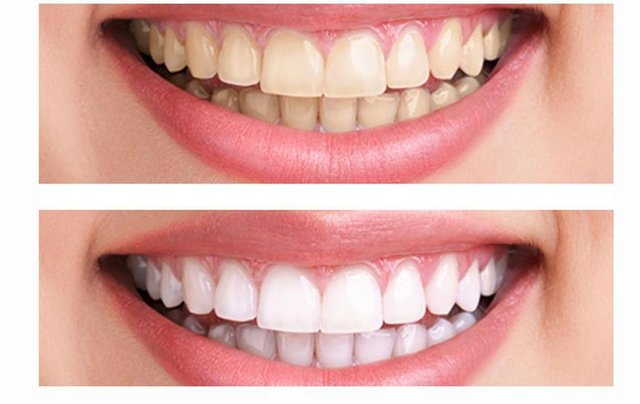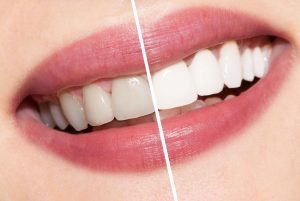Teeth Whitening Options and Safety
Teeth may be stained or discolored for a variety of reasons. If you want to make them brighter and whiter, you can do so safely. There are several options to choose from. You can visit your dentist for whitening treatments or try at-home whitening products. While there are some side effects from teeth whitening, most conventional whitening treatments are safe to use as long as you follow the product’s directions.

How do teeth become discolored?
Teeth can become discolored for several reasons.
Extrinsic discoloration
-Extrinsic discoloration is when foods, beverages, or smoking habits stain your teeth. Coffee, tea, red wine, foods with dyes, and tobacco can contribute to this type of staining. These stains affect the outside of your teeth.
-Extrinsic discoloration may be treated with whitening toothpastes that target the teeth’s outside stains.
Intrinsic discoloration
-Intrinsic discoloration is from within the tooth. You may have intrinsic discoloration because of medication use, childhood illness, infection, tooth trauma, or aging.
-Intrinsic discoloration may need to be professionally bleached to get the same level, or better, of teeth whiteness.
While teeth whitening is considered safe, you may experience some side effects from treatments:
Teeth sensitivity. Your teeth may become more sensitive following teeth whitening. You may experience this on your first or second treatment, and it may diminish with time. Your dentist may recommend treating sensitivity with products that contain potassium nitrate and sodium fluoride gel.
Irritated gums. You may also experience gingival irritation. This is when your gums become irritated. This can happen because of contact on your gums with the whitening product. This side effect should go away after your treatments.
Keep in mind that you cannot whiten your teeth on a permanent basis. You’ll need to seek whitening treatments every so often for both extrinsic and intrinsic discoloration. Also keep in mind that these products are for natural teeth. You’ll need to talk to your dentist about how to unify the color of your teeth if you have implants, crowns, bridges, or dentures.
While teeth whitening is considered safe, you may experience some side effects from treatments:
Teeth sensitivity. Your teeth may become more sensitive following teeth whitening. You may experience this on your first or second treatment, and it may diminish with time. Your dentist may recommend treating sensitivity with products that contain potassium nitrate and sodium fluoride gel.
Irritated gums. You may also experience gingival irritation. This is when your gums become irritated. This can happen because of contact on your gums with the whitening product. This side effect should go away after your treatments.
Keep in mind that you cannot whiten your teeth on a permanent basis. You’ll need to seek whitening treatments every so often for both extrinsic and intrinsic discoloration. Also keep in mind that these products are for natural teeth. You’ll need to talk to your dentist about how to unify the color of your teeth if you have implants, crowns, bridges, or dentures.

Teeth whitening treatments may not be right for you to try while you have active cavities or certain dental work in progress.
Your eating, drinking, and oral hygiene habits can impact how long your teeth whitening results last. After you’ve completed any whitening treatment, your teeth are still susceptible to staining from beverages like tea and coffee, and certain foods. Rinsing your mouth or brushing your teeth soon after eating or drinking can keep those kinds of discoloring agents from settling into the surface of your teeth — and decrease the chance for plaque to build up!